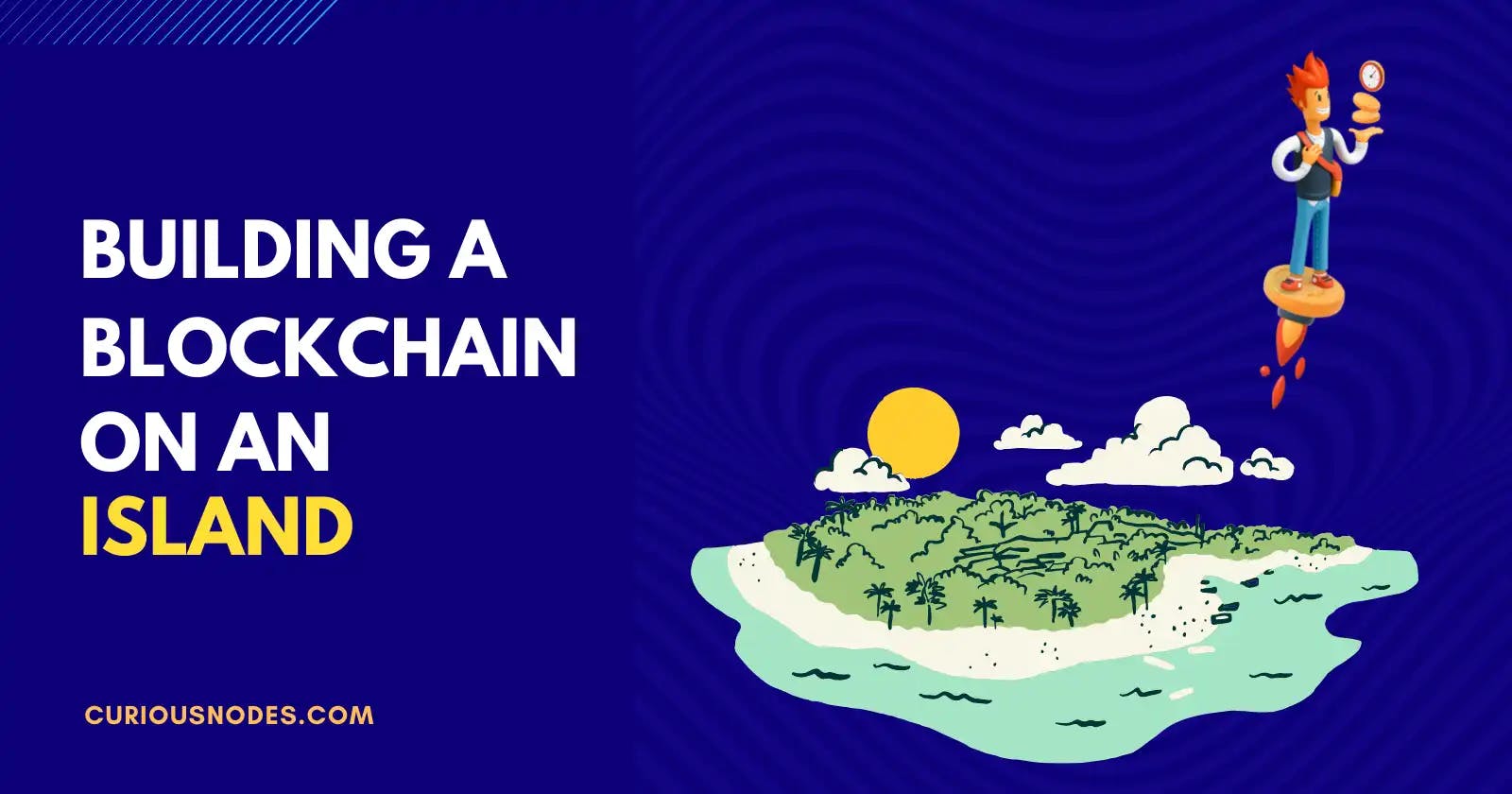You've probably heard of bitcoin and its mysterious creator who goes by the pseudonym, Santoshi Nakamoto. But what if I told you that the history of Blockchain was as old as the 1500s?
What if I told you that modern cryptocurrencies that are making your dumb neighbours millionaires were conceptualized more than 500 hundred years back on an island you can't even pronounce right.
Disclaimer - Not everything you read over the next 10 minutes happened, except for the parts that did. So take the story with a pinch of salt. This story isn't a history lesson, it's a lesson on the blockchain. It's supposed to be a memorable and fun story to help you understand how the blockchain works.

To all the historians reading this, stop now or forever hold your peace.
Let's rewind 500 years back
Okay, it's a sunny afternoon on an island beach, gorgeous blue oceans crashing against the dense green forest. You're chilling by the beach, watching these ancient-looking boats with fishermen come to shore.
Welcome to the land of Yap in Micronesia back in 1528.

Let's go back to the boat. You see these young fishermen walking out of their boats into the cold blue waters, bringing out their catch for the day.
You look at a distance and you see a much larger badass-looking boat approaching you, there seems to be a whole bunch of men on board the boat.
As the boat starts getting closer to the shore, you see villagers running towards the boat. They surround the boat. Damn this must be the winning boat bringing in all the big fish to feed the entire island.
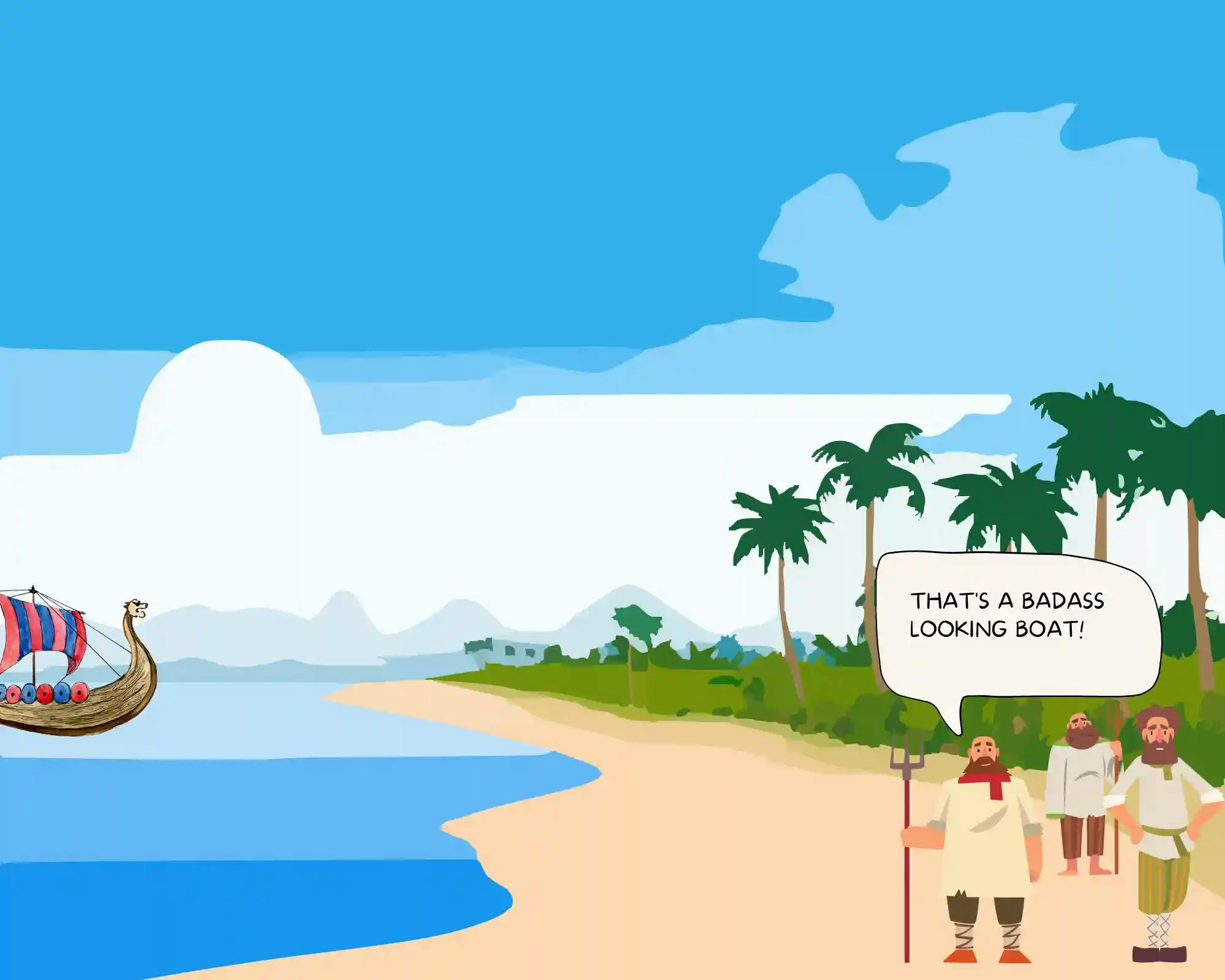
The men get in position and they lift a really big doughnut looking rock. What? A rock? The whole village is here to pick up a rock? It must be a precious rock maybe like a diamond rock or something.
Nope. It's just a rock, a really large and heavy rock.
But there must be something special about the rock? Nope, it's just a regular old doughnut looking rock.
The villagers carry this heavy doughnut and start walking through the dark jungle. And as they walk through the forest surrounded by palm trees, they finally drop the rock in what seems like a graveyard filled with more doughnut looking rocks of different sizes.

One of the older men yells - "This stone belongs to Bob, the son of Marley, who lives across the dry lake with his wife, Mary and daughter, Jane". All the other villagers make a mental note of this statement and congratulate Bob on his achievements.
Life before the internet was hard all right! You did weird shit because you were bored. You didn't have Instagram to mindlessly scroll through videos for hours when you were bored. Back then, you just collected rock.
Creating a Currency
So these rocks should have some value, right? I mean a whole bunch of men spending their entire afternoon transporting a heavy rock to its graveyard has got to be worth something?! And that's the first clue!
As it turns out these rocks aren't from Yap at all. These rocks are only found on islands like Palau which is about 450 kilometres from Yap. That makes these stones rare for the people of Yap.

People from Yap would have to travel for hours at sea, fighting rough tides to get to Palau. Once they were at Palau, they would need to find these rocks on the island.
Loading them into the boat, and crossing a rough sea makes it even more difficult because they could drop the rock at sea and return home empty-handed.
But the rock that does make it to Yap now becomes this rare and super unique item that no one at Yap would have. The only way to be a proud owner of doughnut rock is by putting in the work and getting it from the Palau island yourself.
This gives the doughnut rocks at Yap value because the tribe collectively agree that this scarce product is valuable.
In essence, this process makes the doughnut rocks just as valuable as diamonds to the people of Yap, because :
- Someone has got to mine this scarce resource and
- It's available at Yap in a very limited supply.
This is our first exposure to the people of Yap building their currency. But isn't currency something you can exchange with another person? We're getting there in the coming chapters.
Things you shouldn't take away from this chapter - Don't be smarty pants and give your girlfriend a doughnut-shaped rock, tell her this story and expect her to love you back! The rock only had value at Yap among its people who believed it was of value.
Modern blockchains like bitcoin and Ethereum work on a similar principle. Bitcoin has a certain value because the people buying, mining and trading it believe that it has value - the supply is limited and it's difficult to mine (we're getting to this in the later chapters).
Distributed Ledger
So the wonderful people of Yap now have a currency that they can mine and own. But it isn't a currency if they can't trade it with someone else for goods & services. I mean what real value does a US dollar hold if it can't buy me a large pepperoni with extra cheese?
Let's go back to the rocks graveyard which we now know is more like the Yap's vault!

Remember when Bob received credit for mining his rock and storing it in the vault? A man from the village declared to the entire village that Bob owns the rock.
Yaps built a way to record transactions of their currency by creating something known as a distributed ledger.
In modern banking, a bank maintains the ledger of all the transactions done by its customers. This is a centralised system.
Every time a new rock was mined and successfully stored in the vault. They declared the ownership of the rock to the entire village. Everyone in the village agreed and came to the consensus that this new rock belonged to Bob and made a mental note of this transaction.
Every villager in Yam would keep a personal ledger of who owned which rock.
This also means that Bob can now transfer this value to someone else in the village. How? Bob just needs to tell all the villagers that he is now transferring ownership of his rock to Jamie.
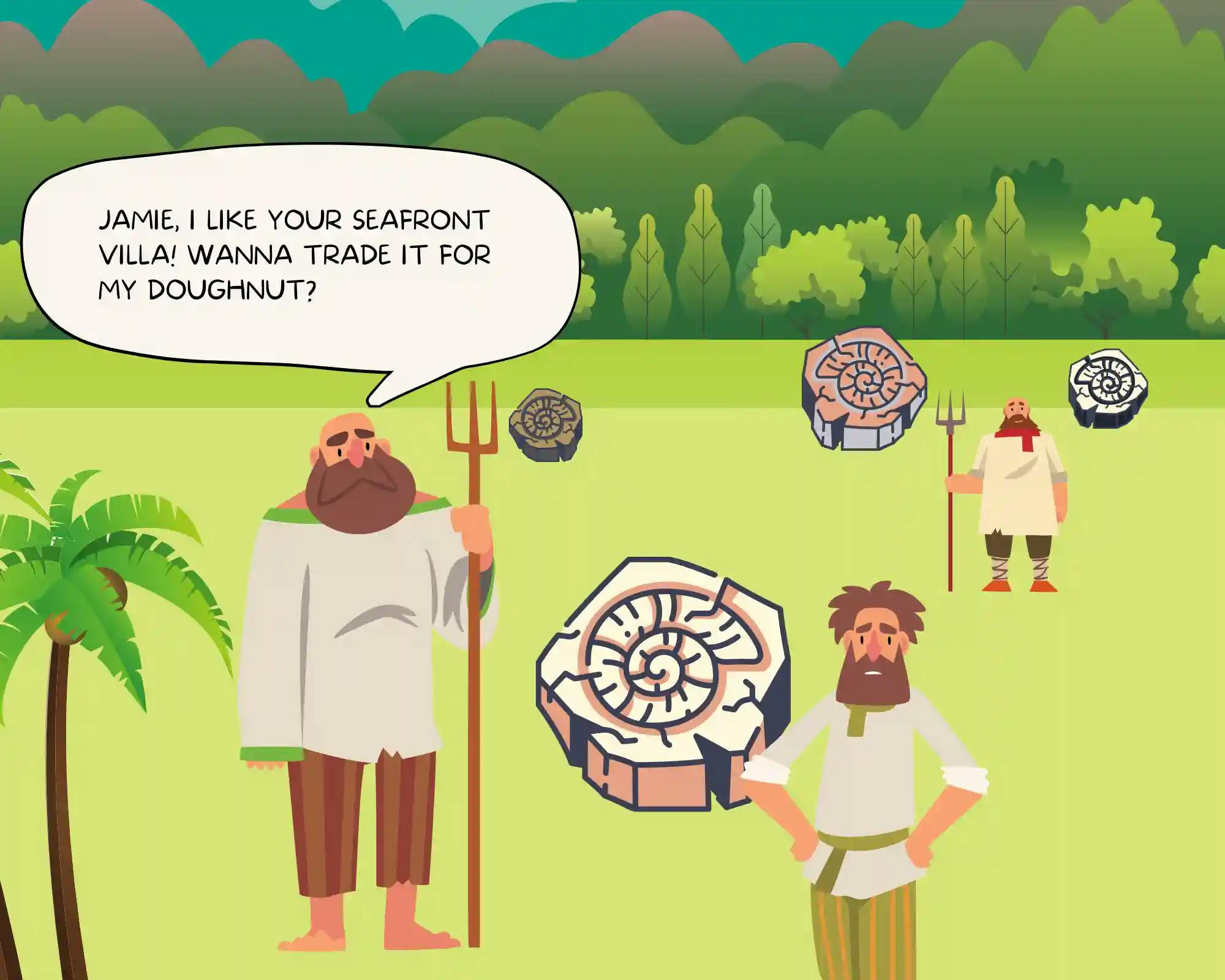
Everyone in the village agrees that Bob was the owner of the rock and that he is now transferring his ownership to the new owner - Jamie. Great, they make a mental note of the new owner.
Yam created thier own distributed ledger. This way everyone in the village knew exactly who owned which rock.
In Blockchain, every node is like a villager at Yam. When a new transaction takes place every node has a record of the updated ledger. This way there is no single centralised system that controls the currency.
Nodes and Consensus
Although a lot of young men on the island of Yap had a thriving hobby of collecting rocks. Most of the other villagers had real important stuff, like fishing, farming, and chilling in their private hammocks. You get the point.
So what happens when there is a new coin minted or a new transaction announcement is made but not everyone in the village is present? Does it mean the coin is invalidated because the rest of the villagers were busy?
Let's look at the Yaps blockchain a little closer. Every villager maintains their ledger and updates their ledger based on the new transactions. This makes every single villager in essence a node on the Yapanese blockchain.
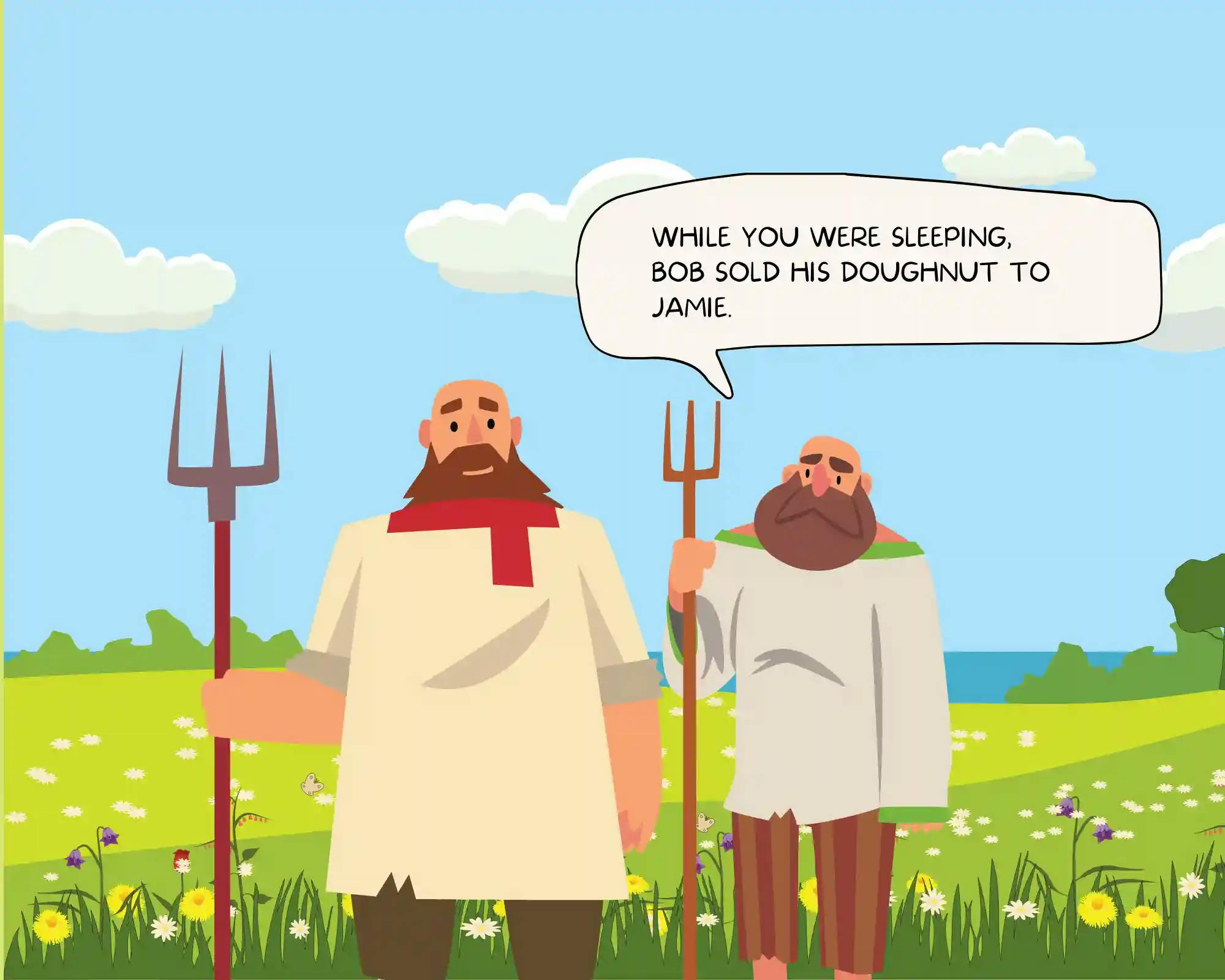
When the Yaps create a new transaction, it could happen that not all the villages are present at the announcement. But that's okay because eventually, the villagers would speak to each other because they would need to update their ledger. Some might get updated a little later than the others, but eventually, all villagers (nodes) would come to a mutual consensus.
Mining
Yaps had a very ambitious hustler named Rick who saw a great opportunity in the thriving Yapneese blockchain.
Rick knew he is smart enough to put together a crew that would travel to the island of Palau, and mine some new rocks. What he didn't know was how difficult the process would be.
At this point, Rick is more like the cheap knockoff of George Clooney in Ocean's Eleven. He starts by recruiting his team. As it turns out all the strong men of Yap have a real job and don't take into Rick's idea of working for over a year without any guaranteed pay upfront.
Shady Rick doesn't give up, he finds people that would believe in his idea and join his crew. Over the next 3 months, these guys put together a boat strong enough to cross the rough pacific ocean.
Finally, the day comes when the boat is ready. The entire crew is on board and they sail for what seems like forever, it takes the crew another 2 months to reach the islands of Palau.
Turns out getting a new rock meant trekking up a mountain, and then bringing the rock back down the mountain. The hungry and weak members of the crew spend the next few months mining a new rock.
Once they have secured the rock they needed they would need to spend about a month chiselling through the rock turning it into a doughnut-shaped rock.
Months pass and they are finally ready to transport the rock back to Yap. Crushing through the rough pacific waters, the crew can finally see the shores of Yap.
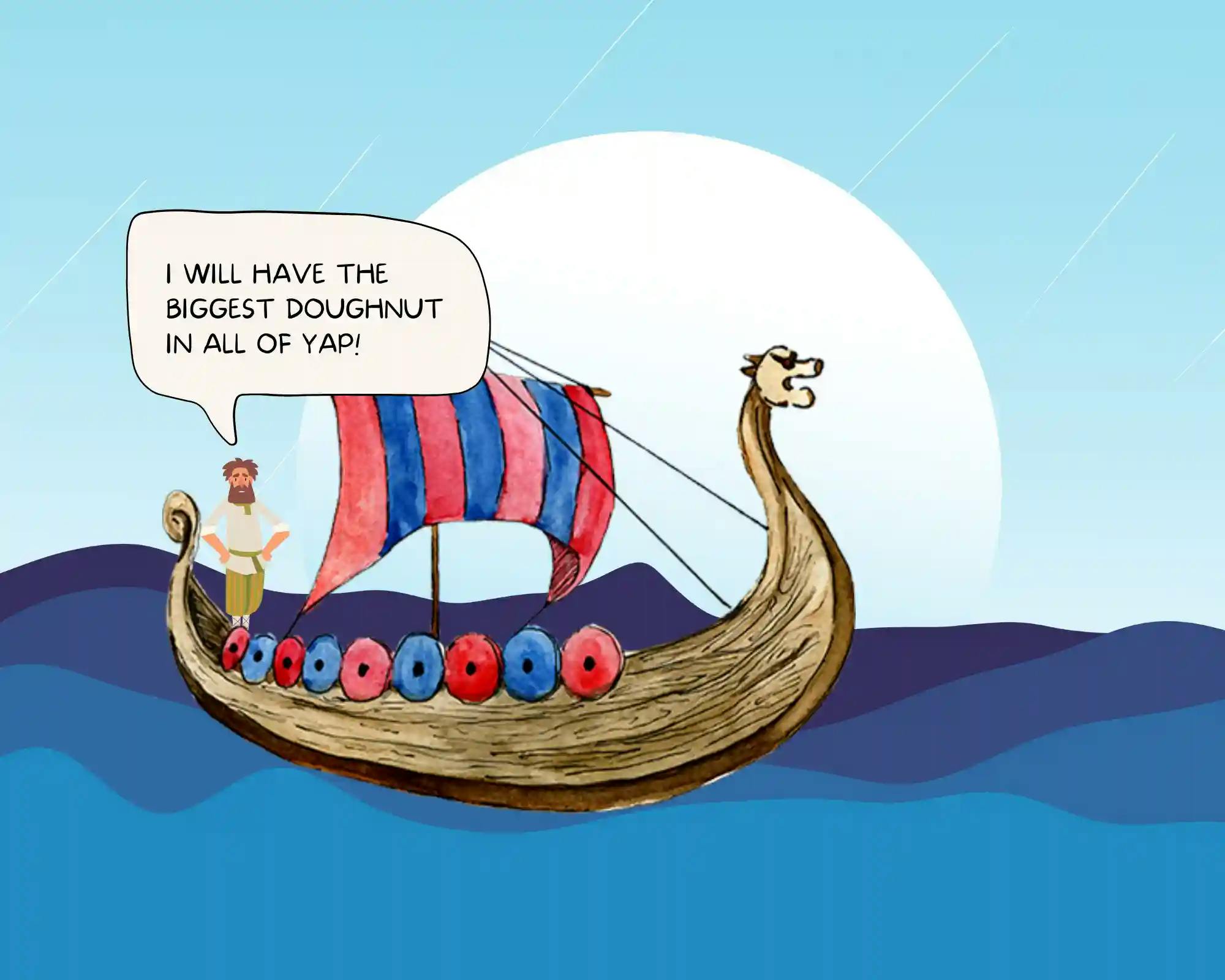
They take the rock to its vault. Rick is declared the owner of the newly mined rock!
Mining is hard work. It has to be right! If mining a new coin were easy, there would be an excess supply of coins at Yap which would reduce its value.
Here's something to think about. While transporting the rocks, if the crew were hit by a hurricane and the rock never reached Yap. Would the rock still be part of the blockchain?
Proof of work
This incident brings to light some core fundamentals of the blockchain at Yap.
Miners were only rewarded when they put in the work and bought the rock back to Yap
- The chances of mining a new coin is purely based on luck
- Having a stronger crew could improved your chances
- The whole mining process was expensive
Conclusion
This article touches upon some core concepts of how a blockchain operates. Hopefully if you have been reading so far, you now have a basic understanding of Distributed Ledgers, Valuing a Currency, Consensus and Proof of work.
While my story is not completely true. This brilliant video by Quartz made back in 2017 could expand your knowledge on modern blockchains.
We will be covering more concepts like hashing, cryptography, wallets, tokens and many more in our upcoming articles. Hit the reaction button to show your support!
Stay Curious!

